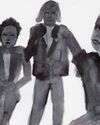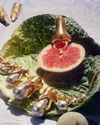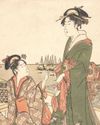Moving with the ebb and flow of times, interest in astrology has risen and fallen in popularity throughout time. Its recent resurgence amongst the millennials, however, warrants a deeper contemplation on the practice.

“WE ARE BORN at a given moment, in a given place, and like vintage years of wine, we have the qualities of the year and of the season in which we are born,” once said prominent Swiss psychiatrist Carl G. Jung on the topic of astrology. To the uninitiated, the vast universe of astrology can be condensed thus: an understanding of planetary alignment at the time of birth that influences an individual’s inherent character traits, abilities and short comings.
Barely the tip of a convoluted conundrum dating centuries back, the practice of astrology, beyond its overarching principle, further diffuses into Western and Eastern practices. The first organised system of the former dates back more than 4,000 years ago in Babylon. Its Eastern equivalent, Chinese Bazi, directly translated as “Eight Characters” (better known as “Four Pillars of Destiny”), was founded in the Song dynasty and further developed more than 200 years ago in the Ming dynasty.
While the influence of celestial bodies has been developed throughout generations, by human experience and in-depth study, its modern day influence is largely stripped down to mere frivolous indulgence. Growing up, quiet reading sessions at the school assembly meant poring over the day’s horoscope readings parked under the entertainment section of the local newspaper. The habit continued into my early teenage years when visits to the magazine stands also meant sieving through the various monthly publications’ horoscope projections and cross-referencing to “fact” check. My juvenile self was not so much in search for a sign from the universe but rather a pursuit of self-amusement. When I progressed into adulthood, along with adolescent naivety, the routine of looking up horoscopes weaned off.
This story is from the July 2018 edition of T Singapore: The New York Times Style Magazine.
Start your 7-day Magzter GOLD free trial to access thousands of curated premium stories, and 9,000+ magazines and newspapers.
Already a subscriber ? Sign In
This story is from the July 2018 edition of T Singapore: The New York Times Style Magazine.
Start your 7-day Magzter GOLD free trial to access thousands of curated premium stories, and 9,000+ magazines and newspapers.
Already a subscriber? Sign In

Look At Us
As public memorials face a public reckoning, there’s still too little thought paid to how women are represented — as bodies and as selves.

Two New Jewellery Collections Find Their Inspiration In The Human Anatomy
Two new jewellery collections find their inspiration in the human anatomy.

She For She
We speak to three women in Singapore who are trying to improve the lives of women — and all other gender identities — through their work.
Over The Rainbow
How the bright colours and lively prints created by illustrator Donald Robertson brought the latest Weekend Max Mara Flutterflies capsule collection to life.

What Is Love?
The artist Hank Willis Thomas discusses his partnership with the Japanese fashion label Sacai and the idea of fashion in the context of the art world.

The Luxury Hotel For New Mums
Singapore’s first luxury confinement facility, Kai Suites, aims to provide much more than plush beds and 24-hour infant care: It wants to help mothers with their mental and emotional wellbeing as well.

Who Gets To Eat?
As recent food movements have focused on buying local or organic, a deeper and different conversation is happening among America’s food activists: one that demands not just better meals for everyone but a dismantling of the structures that have failed to nourish us all along.

Reimagining The Future Of Fashion
What do women want from their clothes and accessories, and does luxury still have a place in this post-pandemic era? The iconic designer Alber Elbaz thinks he has the answers with his new label, AZ Factory.

A Holiday At Home
Once seen as the less exciting alternative to an exotic destination holiday, the staycation takes on new importance.
All Dressed Up, Nowhere To Go
Chinese supermodel He Sui talks about the unseen pressures of being an international star, being a trailblazer for East Asian models in the fashion world, and why, at the end of the day, she is content with being known as just a regular girl from Wenzhou.